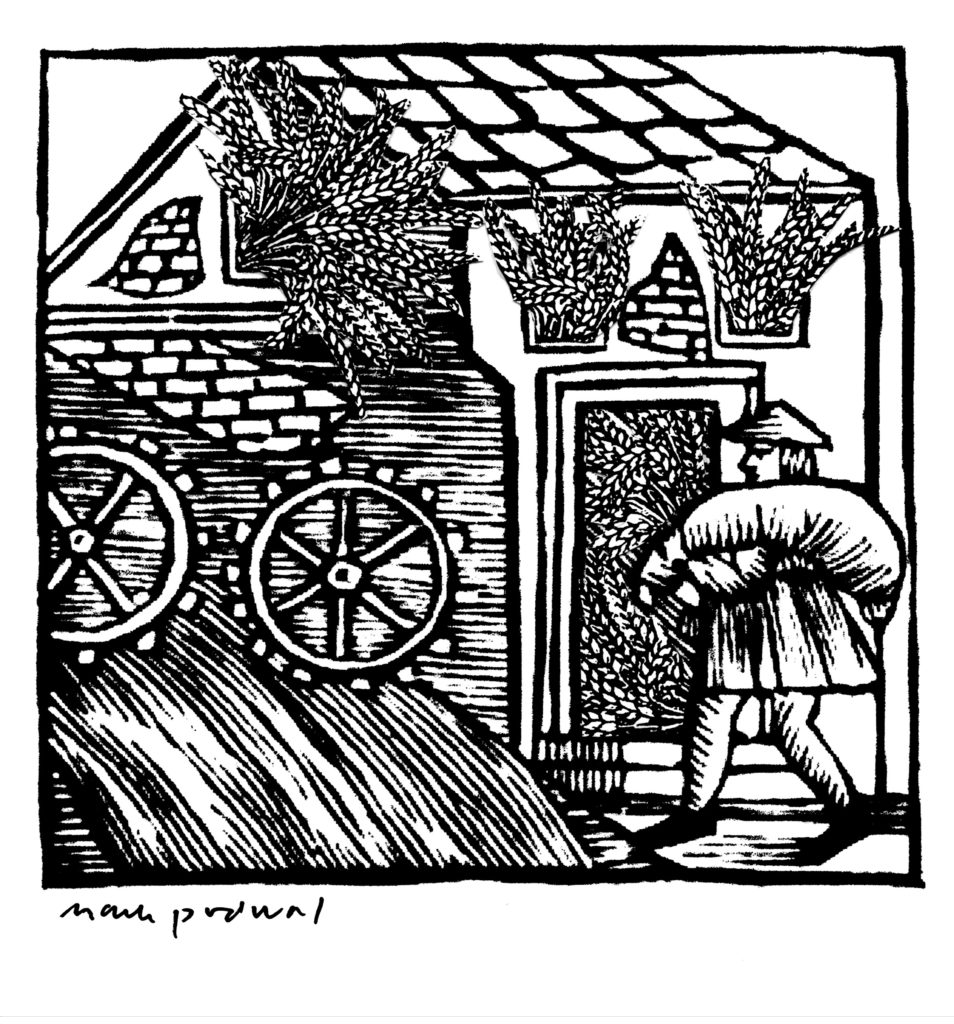Bringing Wheat to be Ground into Flour for Passover
Mark Podwal (b. 1945)
Digitial archival pigment print on paper
7 7/16 x 7 9/16″
USA, 2020
© Mark Podwal
The Torah prohibits the eating of leavened bread during the festival of Passover, which is also called “The Feast of Unleavened Bread” (Exodus 13:3). When the Children of Israel left Egypt, there was not enough time to allow their bread to rise before going into the desert. The Passover Haggadah (liturgical rite) states, “In every generation one is obligated to view himself as though he came out of Egypt.” To personally identify with coming out of Egypt, Jews refrain from eating any type of leavened bread during Passover. Unleavened bread, matzah, traditionally takes the place of chametz (leaven) during the holiday. The Hebrew word chametz refers to food prepared from any of five species of grain—wheat, barley, oats, spelt, and rye—which has been allowed to rise. Matzah can be made from any of these five species of grain. However, it is customary to make matzah from wheat flour only and it is essential that the wheat flour be given no chance to rise. Therefore, the grain used for matzah must be kept perfectly dry. The Torah commands, “And you shall observe the unleavened bread” (Exodus 12:17). All wheat flour used in Passover matzah production must be continually inspected against any signs of moisture. Flour mill bins and transportation must be koshered for Passover, and any equipment used for chametz which cannot be thoroughly cleaned must be effectively kept apart.

